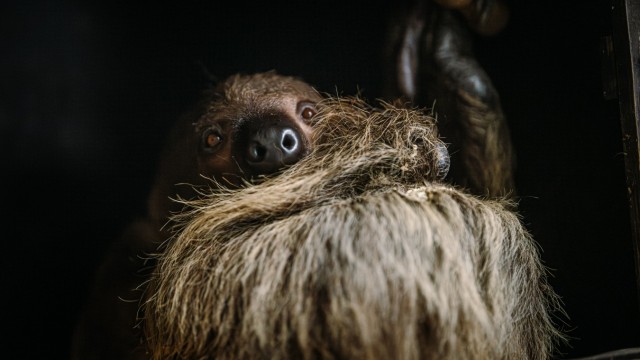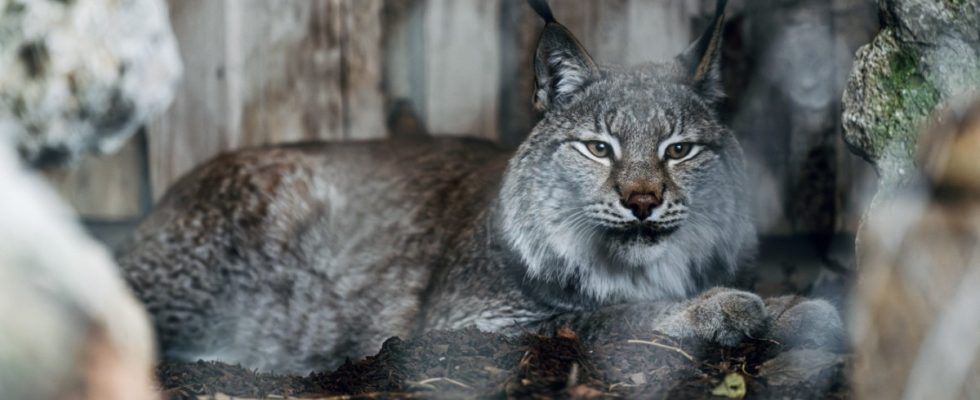Rems has the greatest stress behind him. His move took one day and one night last week when he moved overland from Riga to Munich in a transport box. “When he was allowed out here, he first hid and then looked for a place where he could retreat.” But it will, says zoo spokeswoman Lisa Reininger. The newest resident of Hellabrunn is now eating.
Rems, as they say in zoological jargon, now just needs to be “socialized” – with the female lynx that is already resident. He has already taken a look at the lady with whom, if things go well, he can definitely consider starting a family together. In any case, no one in the zoo has anything against it. On the contrary. As soon as Rems feels fit enough in his enclosure, he can walk out the door and through the territory that Ms. Luchs has long since marked.
“The next step is for them both to be allowed out.” Reisinger gives the lynxes one to two weeks to do this. There is a special place on the grid for sniffing each other. The tiger next door is sure to get in Rems’ face too. He can’t get over the enclosure fence.
Has been at the zoo since the end of December: one of two arctic foxes.
(Photo: Jan Saurer – Monacoshots/Jan Saurer/Tierpark Hellabrunn)
Anyone who sets out for a winter walk to Hellabrunn these days also has a good chance of making at least a visual acquaintance with the other new additions to the zoo, such as: two Bactrian camel mares, a pair of arctic foxes, a Przewalski mare. Wild horse and a two-toed sloth.

Two Bactrian mares for Munich: They moved in a few weeks ago.
(Photo: Jan Saurer – Monacoshots/Jan Saurer/Tierpark Hellabrunn)
The arctic fox couple moved into the Hellabrunn Polar World at the end of December. The chemistry seems to be right. “The two get along very well, and having offspring isn’t out of the question here either,” says the spokeswoman. From the visitor area you can see the two Bactrian camel mares that have been living on the property for several weeks. They are in the front enclosure next to the large communal area with the Przewalski horses, but the two animal species still need a bit of time as far as the well-kept neighborhood is concerned. The process of getting used to each other “is still ongoing,” it is said.

Welcome wild horse: A Przewalski mare is also one of the new arrivals in Hellabrunn.
(Photo: Jan Saurer – Monacoshots/Jan Saurer/Tierpark Hellbrunn)
“I am very happy about our many new arrivals,” says zoo director Rasem Baban while walking around the grounds with Mayor Verena Dietl (SPD), who is also chairwoman of the zoo supervisory board. She particularly enjoys the “almost fairytale atmosphere” in the large aviary. “I can only recommend everyone to wrap up warmly and visit our beautiful Munich zoo, even in the winter months.”

Just don’t stress: the two-toed sloth is getting used to Munich.
(Photo: Jan Saurer – Monacoshots/Jan Saurer/Tierpark Hellabrunn)
If it gets too frosty outside, you can slip into the rhino house to warm up. There, where the male sloth Flash has recently been hanging out in peace and quiet. On the way you can take a look at the Mhorr gazelles, who have recently rented a paradise crane.
But it is Rems and Ms. Luchs who are particularly keeping zoo director Baban busy: “I’m excited to see whether we can expect offspring there in the foreseeable future.” In Hellabrunn they have permission to breed lynxes and then release them into the wild. This way you can participate in the conservation of this endangered cat species. Where that will be is still unclear, says Lisa Reininger. “But something is happening there, for example in the Bavarian Forest and Thuringia.” But first Rems has to pay his respects to Mrs. Luchs.

